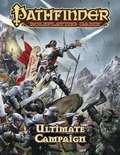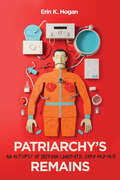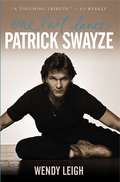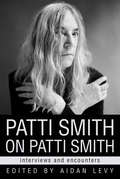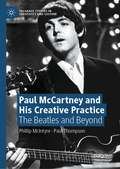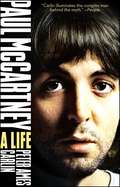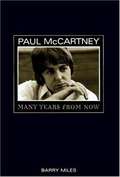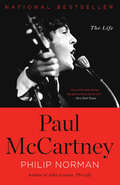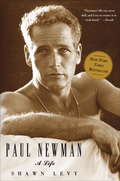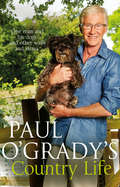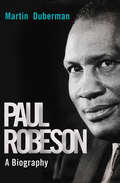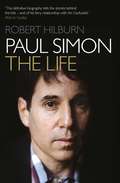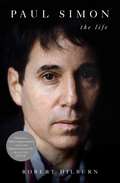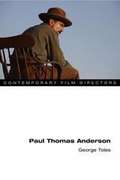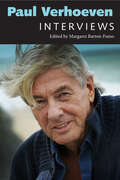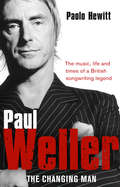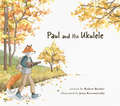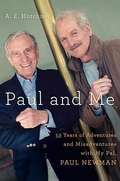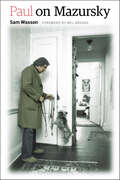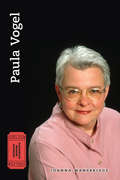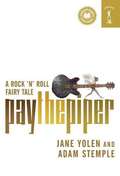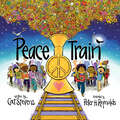- Table View
- List View
Pathfinder Roleplaying Game: Ultimate Campaign
by Paizo PublishingPathfinder RPG Ultimate Campaign is an invaluable addition to the Pathfinder RPG Core Rulebook. This imaginative tabletop games builds on more than 10 years of system development and an open playtest featuring more than 50,000 gamers to create a cutting-edge RPG experience that brings the all-time-best-selling set of fantasy rules into the new millennium. The Pathfinder RPG Ultimate Campaign includes: An extensive system for generating character and NPC backgrounds, history, and family, from the son of the farmer to the king's daughter; innovative new story feats that tie your character's background and experiences into the game, giving players goals to accomplish for even greater rewards; a complete system for tracking what your character does between adventures, from opening a tavern to crafting a powerful magic item; a number of systems to expand Pathfinder play, including fame, honor, relationships, and more; rules for building and maintaining a kingdom, from a small town to a mighty nation; and a simple system for taking kingdoms and larger armies to war against their neighbors or even incredibly powerful monsters, like ancient dragons or the terrifying tarrasque.
Patkatha Lekhan Ek Parichay: पटकथा लेखन एक परिचय
by Manohar Shyam Joshiपटकथा-लेखन एक हुनर है। अंग्रेजी में पटकथा-लेखन के बारे में पचासों किताबें उपलब्ध हैं और विदेशों के, खासकर अमेरिका के, कई विश्वविद्यालयों में पटकथा- लेखन के बाक़ायदा पाठ्यक्रम चलते हैं। लेकिन भारत में इस दिशा में अभी तक कोई पहल नहीं हुई। हिन्दी में तो पटकथा-लेखन और सिनेमा से जुड़ी अन्य विधाओं के बारे में कोई अच्छी किताब छपी ही नहीं है। इसकी एक वजह यह भी है कि हिन्दी में सामान्यतः यह माना जाता रहा है कि लिखना चाहे किसी भी तरह का हो, उसे सिखाया नहीं जा सकता। कई बार तो लगता है कि शायद हम मानते हैं कि लिखना सीखना भी नहीं चाहिए। यह मान्यता भ्रामक है और इसी का नतीजा है कि हिन्दी वाले गीत-लेखन, रेडियो, रंगमंच, सिनेमा, टी.वी. और विज्ञापन आदि में ज़्यादा नहीं चल पाए। लेकिन इधर फिल्म व टी.वी. के प्रसार और पटकथा- लेखन में रोजगार की बढ़ती संभावनाओं को देखते हुए अनेक लोग पटकथा-लेखन में रुचि लेने लगे हैं, और पटकथा के शिल्प की आधारभूत जानकारी चाहते हैं। अफसोस कि हिन्दी में ऐसी जानकारी देने वाली पुस्तक अब तक उपलब्ध ही नहीं थी। ‘पटकथा-लेखन: एक परिचय’ इसी दिशा में एक बड़ी शुरुआत है, न सिर्फ इसलिए कि इसके लेखक सिद्ध पटकथाकार मनोहर श्याम जोशी हैं, बल्कि इसलिए भी कि उन्होंने इस पुस्तक की एक-एक पंक्ति लिखते हुए उस पाठक को ध्यान में रखा है जो फिल्म और टी.वी. में होने वाले लेखन का ‘क, ख, ग’ भी नहीं जानता। प्राथमिक स्तर की जानकारियों से शुरू करके यह पुस्तक हमें पटकथा-लेखन और फिल्म व टी.वी. की अनेक माध्यमगत विशेषताओं तक पहुँचाती है; और सो भी इतनी दिलचस्प और जीवन्त शैली में कि पुस्तक पढ़ने के बाद आप स्वतः ही पटकथा पर हाथ आजमाने की सोचने लगते हैं।
Patriarchy’s Remains: An Autopsy of Iberian Cinematic Dark Humour (McGill-Queen's Iberian and Latin American Cultures Series #8)
by Erin K. HoganSomething is rotten in the state of Spain. The uninterred corpse of a patriarchal figure populates the visual landscapes of Iberian cinemas. He is chilled, drugged, perfumed, ventilated, presumed dead, speared in the cranium, and worse.Analyzing a series of Iberian cinematic dark comedies from the 1950s to the present day, Patriarchy’s Remains argues that the cinematic trope of the patriarchal death symbolizes the lingering remains of the Francisco Franco dictatorship in Spain (1939–75). These films, created as satirical responses to persisting economic, social, and political issues, demonstrate that Spain’s transition to democracy following the Francoist period is an incomplete and ongoing process. Within the theme of patriarchal decay, the significance of the figure differs across cinematic representations, from his indispensability to his obstructionism and exploitation. Erin Hogan traces the prevalence of patriarchal death by analyzing its relationship with the surrounding characters who must depend on the deceased. Hogan demonstrates how the patriarch’s persistence in film both reveals and challenges an array of discriminations and inequalities in the cinematic grotesque tradition, in Iberian cinemas more broadly, and in Iberian society as a whole.Despite Spain’s ongoing transition towards democratic pluralism, Patriarchy’s Remains serves as a reminder that the remnants of an entrenched although not interred patriarchal culture continue to haunt Iberian society.
Patrick Swayze: One Last Dance
by Wendy LeighA heartwarming, in-depth portrait of the beloved star whose sensational performances in Dirty Dancing and Ghost seduced a generation, and whose courage in the face of illness captivated millions For almost thirty years, Patrick Swayze has been an American icon of masculinity and sex appeal, strong but sensitive, romantic yet dangerous. In this intimate and revealing biography, New York Times bestselling author Wendy Leigh shares the inspiring untold story of Patrick's incredible life: his show business childhood, his fairy-tale love affair with wife Lisa Niemi, his catapult into alcoholism after his father's untimely death, the daredevil exploits that almost killed him, and his courageous fight against pancreatic cancer, a fight that has off-ered hope and encouragement to others grap-pling with similar life-threatening illnesses. Ever since the steamy low-budget film Dirty Dancing skyrocketed Patrick to fame and cemented his place in the hearts of audiences around the world, he has been one of our most cherished public figures. Based on interviews with countless sources who have never spoken about Patrick before -- from the Texas beauty who shared his first kiss, to the woman he almost married, to the manager who worked closely with him from his teen idol days until his romantic tour de force in Ghost -- and many more, Leigh unveils surprising details about the charismatic actor's life on- and off-screen. Beginning with his training as a dancer with his choreographer mother and spanning his remarkable -- and at times challenging -- career, this groundbreaking biography of the un-forgettable entertainer is the mesmerizing, enduring, and definitive story of a man who captured our hearts.
Patti Smith on Patti Smith: Interviews and Encounters (Musicians in Their Own Words)
by Aidan LevyFrom the moment Patti Smith burst onto the scene, chanting "Jesus died for somebody's sins, but not mine," the irreverent opening line to Horses, her 1975 debut album, the punk movement had found its dissident intellectual voice. Yet outside the recording studio—Smith has released eleven studio albums—the punk poet laureate has been perhaps just as revelatory and rhapsodic in interviews, delivering off-the-cuff jeremiads that emboldened a generation of disaffected youth and imparting hard-earned life lessons. With her characteristic blend of bohemian intellectualism, antiauthoritarian poetry, and unflagging optimism, Smith gave them hope in the transcendent power of art. In interviews, Smith is unfiltered and startlingly present, and prescient, preaching a gospel bound to shock or inspire. Each interview is part confession, part call-and-response sermon with the interviewer. And there have been some legendary interviewers: William S. Burroughs, Thurston Moore (of Sonic Youth), and novelist Jonathan Lethem. Her interview archive serves as a compelling counternarrative to the albums and books. Initially, interviewing Patti Smith was a censorship liability. Contemptuous of staid rules of decorum, no one knew what she might say, whether they were getting the romantic, swooning for Lorca and Blake, or the firebrand with no respect for an on-air seven-second delay. Patti Smith on Patti Smith is a compendium of profound and reflective moments in the life of one of the most insightful and provocative artists working today.
Paul McCartney and His Creative Practice: The Beatles and Beyond (Palgrave Studies in Creativity and Culture)
by Paul Thompson Phillip McIntyreThis book provides fresh insight into the creative practice developed by Paul McCartney over his extended career as a songwriter, record producer and performing musician. It frames its examination of McCartney’s work through the lens of the systems model of creativity developed by Mihaly Csikszentmihalyi and combines this with the research work of Pierre Bourdieu. This systems approach is built around the basic structures of idiosyncratic agents, like McCartney himself, and the choices he has made as a creative individual. It also locates his work within social fields and cultural domains, all crucial aspects of the creative system that McCartney continues to be immersed in. Using this tripartite system, the book includes analysis of McCartney’s creative collaborations with musicians, producers, artists and filmmakers and provides a critical analysis of the Romantic myth which forms a central tenet of popular music. This engaging work will have interdisciplinary appeal to students and scholars of the psychology of creativity, popular music, sociology and cultural studies.
Paul McCartney: A Life
by Peter Ames CarlinA biography of musician Paul McCartney, spanning from his years with The Beatles to his solo albums today.
Paul McCartney: Many Years From Now
by Barry MilesThis book is a history from the inside, of one of the greatest song-writing partnerships of the century. It is the private life of a man made public property - a Beatle - by the age of 21. It is the trajectory of the most popular pop group in history, from the beginnings to break-up.
Paul McCartney: The Biography
by Philip Norman'A thorough, objective telling of McCartney's story - in and out of the most famous band ever.' ESQUIREThe first biography written with McCartney's approval and with access to family members and friends closest to him.In 2013, Sir Paul McCartney granted Philip Norman 'tacit approval' as his biographer. The result is a masterly and complex portrait of the most successful songwriter in history.It gives a unique insight into McCartney's childhood, blighted by the loss of his mother when he was fourteen, and into the creative symbiosis and fierce rivalry between John Lennon and himself that powered the Beatles' music. Here, too, for the first time, is the full story of McCartney's triumphant but troubled post-Beatles years: the tragic death of his first wife, Linda, and the chaotic divorce from his second wife, Heather Mills.Paul McCartney is the definitive life of a long-misunderstood genius that superbly evokes half a century of popular music and culture.
Paul McCartney: The Life
by Philip NormanThe definitive Paul McCartney biography, written with his approval by bestselling biographer Philip Norman.Since the age of twenty-one, Paul McCartney has lived one of the ultimate rock-n-roll lives played out on the most public of stages. Now, Paul's story is told by rock music's foremost biographer, with McCartney's consent and access to family members and close friends who have never spoken on the record before. PAUL McCARTNEY reveals the complex character behind the façade and sheds new light on his childhood--blighted by his mother's death but redeemed by the father who introduced him to music. This is the first definitive account of Paul's often troubled partnership with John Lennon, his personal trauma after the Beatles' breakup, and his subsequent struggle to get back to the top with Wings--which nearly got him murdered in Africa and brought him nine days in a Tokyo jail. Readers will learn about his marriage to Linda, including their much-criticized musical collaboration, and a moving account of her death. Packed with new information and critical insights, PAUL MCCARTNEY will be the definitive biography of a musical legend.
Paul Newman: A Life
by Shawn LevyNEW YORK TIMES BESTSELLER • &“[This] absorbing, affectionate portrait manages to bring [Newman] back to us. . . . Paul Newman leaves readers with a surprisingly cheering message. If the rest of us can&’t aspire to having Newman&’s life, we can at least take inspiration from the way he lived his.&”—The Washington Post &“A graceful tribute to a one-of-a-kind man.&”—The Seattle Times&“Newman&’s life was never dull, and Levy re-creates it in vivid detail.&”—ParadePaul Newman, the Oscar-winning actor with the legendary blue eyes, achieved superstar status by playing charismatic renegades, broken heroes, and winsome antiheroes in such revered films as The Hustler, Cool Hand Luke, Butch Cassidy and the Sundance Kid, The Verdict, The Color of Money, and Nobody&’s Fool. But Newman was also an oddity in Hollywood: the rare box-office titan who cared about the craft of acting, the sexy leading man known for the staying power of his marriage, and the humble celebrity who made philanthropy his calling card long before it was cool. Unlike his father, a successful entrepreneur, Newman bypassed the family sporting goods business to pursue an acting career. After struggling as a theater and television actor, Newman landed the lead role of boxer Rocky Graziano in Somebody Up There Likes Me when, in a tragic twist of fate, James Dean was killed in a car accident. Part of the original Actors Studio generation, Newman demanded a high level of rigor and clarity from every project. The artistic battles that nearly derailed his early movie career would pay off handsomely at the box office and earn him critical acclaim.He applied that tenacity to every endeavor both on and off the set. The outspoken Newman used his celebrity to call attention to political causes dear to his heart, including civil rights and nuclear proliferation. Taking up auto racing in midlife, Newman became the oldest driver to ever win a major professional auto race. A food enthusiast who would dress his own salads in restaurants, he launched the Newman&’s Own brand dedicated to fresh ingredients, a nonprofit juggernaut that has generated more than $250 million for charity.In Paul Newman: A Life, Shawn Levy gives readers the ultimate behind-the-scenes examination of the actor&’s life, from his merry pranks on the set to his lasting romance with Joanne Woodward to the devastating impact of his son&’s death from a drug overdose. This expansive biography is a portrait of an extraordinarily gifted man who gave back as much as he got out of life—and just happened to be one of the most celebrated movie stars of the twentieth century.
Paul O'Grady's Country Life: Heart-warming and hilarious tales from Paul
by Paul O'GradyTHE SUNDAY TIMES BESTSELLERA fascinating and hilarious glimpse into Paul's life at home in the country with his animalsPaul O'Grady's Country Life for the first time gives a glimpse into the home life of one of Britain’s best loved stars, alongside the animals he adores. Sometimes rural idyll, sometimes hell on earth, Paul’s life in rural Kent has been shared over the years with some very vocal pigs, a mad cow, various rescued barn owls, the world’s most sadistic geese and Christine the psychotic sheep – among many other animal waifs and strays. And of course Paul tells the stories of the dogs in his life – including the tiny chihuahua/Jack Russell cross with Napoleonic ambitions, Eddie, Miss Olga, Bullseye, Louis, Boycie and, of course, Buster, the greatest canine star since Lassie. In addition, Paul shares some of his favourite recipes, explores country lore and superstitions, and extols the benefits of growing your own vegetables, herbs and fruit.This is a warts-and-all account of country living, as far removed from the bright lights of celebrity as you could ever imagine. The trials and tribulations Paul experienced on moving to deepest darkest Kent as a dyed-in-the-wool city dweller are every bit as hilarious and eventful as you would think. He had a lot of new skills to learn, and fast: everything from how to churn your own butter and how to birth a lamb to the best way to lure a cow out of your kitchen while naked from the waist down.Brilliantly funny and full of classic stories, Paul O’Grady’s Country Life is your armchair guide to the wonders and horrors of rural existence._____________________________Readers love Paul O’Grady’s Country Life:***** ‘This book is excellent. It will make you laugh out loud and it will make you cry.’***** ‘Delightful read. An insight into Paul O’Gradys country life, told in his true fashion. Couldn’t put it down!’***** ‘I think he has a gift of compassion for animals as well as people and it always shines through.’
Paul Robeson: A Biography (Lives Of The Left Ser.)
by Martin DubermanThe remarkable life of Paul Robeson, quintessential Harlem Renaissance man: scholar, all-American, actor, activist, and firebrandBorn the son of an ex-slave in New Jersey in 1898, Paul Robeson, endowed with multiple gifts, seemed destined for fame. In his youth, he was as tenacious in the classroom as he was on the football field. After graduating from Rutgers with high honors, he went on to earn a law degree at Columbia. Soon after, he began a stage and film career that made him one of the country&’s most celebrated figures.But it was not to last. Robeson became increasingly vocal about defending black civil rights and criticizing Western imperialism, and his radical views ran counter to the country&’s evermore conservative posture. During the McCarthy period, Robeson&’s passport was lifted, he was denounced as a traitor, and his career was destroyed. Yet he refused to bow. His powerful and tragic story is emblematic of the major themes of twentieth-century history.Martin Duberman&’s exhaustive biography is the result of years of research and interviews, and paints a portrait worthy of its incredible subject and his improbable story. Duberman uses primary documents to take us deep into Robeson&’s life, giving Robeson the due that he so richly deserves.
Paul Simon: The Life
by Robert Hilburn'There’s no tougher a mind, no more tender a voice than Paul Simon, and there’s no better man than Robert Hilburn to decipher the hardwiring of this hyperintellect...great songs can never be fully explained, but the great man on his way to find those songs surely can.' —Bono Through such hits as “The Sound of Silence,” “Bridge Over Troubled Water,” “Still Crazy After All These Years,” and “Graceland,” Paul Simon has spoken to us in songs for a half-century about alienation, doubt, survival, and faith in ways that have established him as one of the most honoured and beloved songwriters in American pop music history. Yet Simon has refused to talk to potential biographers and urged those close to him to also remain silent. But Simon not only agreed to talk to biographer Robert Hilburn for what has amounted to more than sixty hours, he also encouraged his family and friends to sit down for in-depth interviews. Paul Simon is a revealing account of the challenges and sacrifices of artistry at the highest level. He has also lived a roller-coaster life of extreme ups and downs. We not only learn Paul’s unrelenting drive to achieve artistry, but also the subsequent struggles to protect that artistry against distractions – fame, wealth, marriage, divorce, drugs, complacency, public rejection, self-doubt – that have frequently derailed pop stars and each of which he encountered. From dominating the charts with Art Garfunkel and a successful reinvention as a solo artist, to his multiple marriages and highly publicized second divorce from Carrie Fisher, this book covers all aspects of this American icon.'When it comes to writing songs, no one does it better than Paul Simon. Robert Hilburn’s is a wise and winning account of our most nimble, nuanced, and numinous poet-musician.' —Paul Muldoon'A tantalizing look into the mind and writing process of the man who is arguably the finest craftsman of the American popular song since the Gershwin brothers, this book will delight any Paul Simon fan or student of popular culture.' —Linda Ronstadt
Paul Simon: The Life
by Robert HilburnA publishing event from music legend Paul Simon: an intimate, candid, and definitive biography written with Simon’s full participation—but without his editorial control—by acclaimed biographer and music writer Robert Hilburn.For more than fifty years, Paul Simon has spoken to us in songs about alienation, doubt, resilience, and empathy in ways that have established him as one of the most beloved artists in American pop music history. Songs like “The Sound of Silence,” “Bridge Over Troubled Water,” “Still Crazy After All These Years,” and “Graceland” have moved beyond the sales charts and into our cultural consciousness. But Simon is a deeply private person who has resisted speaking to us outside of his music. He has said he will not write an autobiography or memoir, and he has refused to talk to previous biographers. Finally, Simon has opened up—for more than one hundred hours of interviews—to Robert Hilburn, whose biography of Johnny Cash was named by Michiko Kakutani of the New York Times as one of her ten favorite books of 2013. The result is a landmark book that will take its place as the defining biography of one of America’s greatest artists. It begins in Kew Gardens Hills, Queens, where, raised by a bandleader father and schoolteacher mother, Simon grew up with the twin passions of baseball and music. The latter took over at age twelve when he and schoolboy chum Art Garfunkel became infatuated with the alluring harmonies of doo-wop. Together, they became international icons, and then Simon went on to even greater artistic heights on his own. But beneath the surface of his storied five-decade career is a roller coaster of tumultuous personal and professional ups and downs. From his remarkable early success with Garfunkel to their painfully acrimonious split; from his massive early hits as a solo artist to the wrenching commercial failures of One-Trick Pony and Hearts and Bones; from the historic comeback success of Graceland and The Rhythm of the Saints to the star-crossed foray into theater with The Capeman and a late-career creative resurgence—his is a musical life unlike any other. Over the past three years, Hilburn has conducted in-depth interviews with scores of Paul Simon’s friends, family, colleagues, and others—including ex-wives Carrie Fisher and Peggy Harper, who spoke for the first time—and even penetrated the inner circle of Simon’s long-reclusive muse, Kathy Chitty. The result is a deeply human account of the challenges and sacrifices of a life in music at the highest level. In the process, Hilburn documents Simon’s search for artistry and his constant struggle to protect that artistry against distractions—fame, marriage, divorce, drugs, record company interference, rejection, and insecurity—that have derailed so many great pop figures. Paul Simon is an intimate and inspiring narrative that helps us finally understand Paul Simon the person and the artist. “With train-wreck moments and tender interludes alike, it delivers a sharply detailed Kodachrome of a brilliant musician” (Kirkus Reviews).
Paul Thomas Anderson (Contemporary Film Directors)
by George TolesSince his explosive debut with the indie sensation Hard Eight , Paul Thomas Anderson has established himself as one of contemporary cinema's most exciting artists. His 2002 feature Punch-Drunk Love radically reimagined the romantic comedy. Critics hailed There Will Be Blood as a key film of the new millennium. In The Master , Anderson jarred audiences with dreamy amorphousness and a departure from conventional story mechanics. Acclaimed film scholar and screenwriter George Toles approaches these three films in particular, and Anderson's oeuvre in general, with a focus on the role of emergence and the production of the unaccountable. Anderson, Toles shows, is an artist obsessed with history, workplaces, and environments but also intrigued by spaces as projections of the people who dwell within. Toles follows Anderson from the open narratives of Boogie Nights and Magnolia through the pivot that led to his more recent films, Janus-faced masterpieces that orbit around isolated central characters--and advance Anderson's journey into allegory and myth. Blending penetrative analysis with a deep knowledge of filmic storytelling, Paul Thomas Anderson tours an important filmmaker's ever-deepening landscape of disconnection.
Paul Verhoeven: Interviews (Conversations with Filmmakers Series)
by Margaret Barton-FumoAfter a robust career in the Netherlands as the country's most successful director, Paul Verhoeven (b. 1938) built an impressive career in the United States with such controversial blockbusters as RoboCop, Total Recall, Basic Instinct, Starship Troopers, and Showgirls before returning home to direct 2006's Black Book. After a recent stint as a reality television judge in the Netherlands, Verhoeven returned to the big screen with his first feature film in a decade, a highly anticipated French-language production, Elle, starring Isabelle Huppert.Verhoeven, who holds an advanced degree in mathematics and physics, boasts a fascinating background. Traversing Hollywood, the Dutch film industry, and now French filmmaking, the interviews in this volume reveal a complex, often ambiguous figure, as well as a director of immense talent.Paul Verhoeven: Interviews covers every phase of the director's career, beginning with six newly translated Dutch newspaper interviews dating back to 1968 and ending with a set of previously unpublished interviews dedicated to his most recent work. He experimented with crowd-sourced filmmaking for the television show The Entertainment Experience, which resulted in the film Tricked, as well as his latest feature Elle. Editor Margaret Barton-Fumo includes "Sex, Cinema and Showgirls," a long out-of-print essay by Verhoeven on his most controversial film, accompanied by pages of original storyboards from this and some of Verhoeven's other films. Finally, Barton-Fumo allots due attention to the director's little-known lifelong fascination with the historical Jesus Christ. Verhoeven is the only non-theologian member of the exclusive Westar Institute and author of the book Jesus of Nazareth.
Paul Weller - The Changing Man
by Paolo HewittPaolo Hewitt has known Paul Weller since they were both teenagers in the depths of Woking, through his ascent to fame with The Jam, the halcyon years of The Style Council and for all of his critically acclaimed solo career. Hewitt has even been the inspiration for some of Weller's songs - and he has extraordinary in-depth knowledge of the inspiration behind the rest.Once, when Hewitt interviewed Weller for a music magazine, he complained - 'I don't know why people ask me all these questions. All the answers are in my songs.' Largely unnoticed, Weller has used thirty-years of lyrics to explore his personal history and beliefs. Taking as his starting point these lyrics, alongside a lifetime's friendship, Paolo Hewitt shows us the real Paul Weller, the man inside the music.
Paul and His Ukulele
by Robert BroderNot all who wander are lost, sometimes they're just searching for a new song.Paul was given a present. “A guitar?” said Paul. “It's a ukulele.” said his parents.Paul loved his ukulele and spent all his time crafting his own song. As he got older, Paul knew it was time to head out in search of something new.When his travels took him to one small town, the unexpected happened. But from unexpected circumstances can come new friendships and new experiences. And maybe that new song he's been looking for.
Paul and Me: Fifty-three Years of Adventures and Misadventures with My Pal Paul Newman
by A. E. HotchnerBestselling author A. E. Hotchner's intimate account of his 53-year friendship with his pal Paul Newman. A. E. Hotchner first met Paul Newman in 1955 when the virtually unknown actor assumed the lead role in Hotchner's first television play, based on an Ernest Hemingway story. The project elevated both men from relative obscurity to recognition and began a close and trusted friendship that lasted until Newman's death in 2008. In Paul and Me, Hotchner depicts a complicated, unpredictable, fun-loving, talented man, and takes the reader along on their adventures. The pair traveled extensively, skippered a succession of bizarre boats, confounded the business world, scored triumphs on the stage, and sustained their friendship through good times and bad. Most notably, they started Newman's Own as a prank and watched it morph into a major enterprise that so far has donated all its $300 million in profit to charities including the Hole in the Wall Camps worldwide, dedicated to helping thousands of children with life-threatening illnesses. Paul and Me, complete with personal photographs, is the story of a freewheeling friendship and a tribute to the acclaimed actor who gave to the world as much as the world gave him.From the Hardcover edition.
Paul on Mazursky (Wesleyan Film)
by Sam WassonPaul Mazursky's nearly twenty films as writer/director represent Hollywood's most sustained comic expression of the 1970s and 1980s. But they have not been given their due, perhaps because Mazursky's films—both sincere and ridiculous, realistic and romantic—are pure emotion. This makes films like Bob & Carol & Ted & Alice, An Unmarried Woman, and Enemies, A Love Story difficult to classify, but that's what makes a human comedy human. In the first ever book-length examination of one of America's most important and least appreciated filmmakers, Sam Wasson sits down with Mazursky himself to talk about his movies and how he makes them. Going over Mazursky's oeuvre one film at a time, interviewer and interviewee delve into the director's life in and out of Hollywood, laughing, talking, and above all else, feeling—like Mazursky's people always do. The book includes a filmography and never-before-seen photos.
Paula Vogel
by Joanna MansbridgePaula Vogel's plays, including the Pulitzer-prizewinning How I Learned to Drive, initiate a conversation with contemporary culture, staging vexed issues like domestic violence, pornography, and AIDS. She does not write "about" these concerns, but instead examines how they have become framed as "issues"-as sensationalized topics-focusing on the histories and discourses that have defined them and the bodies that bear their meanings. Mobilizing campy humor, keen insight, and nonlinear structure, her plays defamiliarize the identities and issues that have been fixed as "just the way things are." Vogel crafts collage-like playworlds that are comprised of fragments of history and culture, and that are simultaneously inclusive and alienating, familiar and strange, funny and disturbing. At the center of these playworlds are female characters negotiating with the images and discourses that circumscribe their lives and bodies. In this, the first book-length study of Vogel and her work, Joanna Mansbridge explores how Vogel's plays speak back to the canon, responding to and rewriting works by William Shakespeare, Edward Albee, Sam Shepard, and David Mamet, rearranging their plots, revising their conflicts, and recasting their dramatis personae. The book examines the theories shaping the playwright and her plays, the production and reception of her work, and the aesthetic structure of each play, grounding the work in cultural materialist, feminist and queer theory, and theater and performance studies scholarship.
Pauline Kael
by Brian KellowSelected by The New York Times Book Review as a Notable Book of the Year The first biography of The New Yorker's influential, powerful, and controversial film critic. A decade after her death, Pauline Kael remains the most important figure in film criticism today, in part due to her own inimitable style and power within the film community and in part due to the enormous influence she has exerted over an entire subsequent generation of film critics. During her tenure at the New Yorker from 1967 to 1991 she was a tastemaker, a career maker, and a career breaker. Her brash, vernacular writing style often made for an odd fit at the stately New Yorker. Brian Kellow gives us a richly detailed look at one of the most astonishing bursts of creativity in film history and a rounded portrait of this remarkable (and often relentlessly driven) woman. Pauline Kael is a book that will be welcomed by the same audience that made Mark Harris's Pictures at a Revolution and Peter Biskind's Easy Riders, Raging Bulls bestsellers, and by anyone who is curious about the power of criticism in the arts. .
Pay the Piper: A Rock 'n' Roll Fairy Tale
by Jane Yolen Adam StempleA rock 'n' roll band to die for. When fourteen-year-old Callie McCallan scores a backstage pass to interview the lead singer of the famous band Brass Rat, she's thrilled. Peter Gringras is so cool. When he plays his flute, it's as if he has some kind of hypnotic power. But there is something strange about him, something Callie can't quite put her finger on. Then, on Halloween night, Callie's little brother Nicky disappears, along with all the other children in town. It's crazy, but Callie thinks she knows where the children have gone--and who took them. To prove it, and to rescue Nicky and the other children, Callie must journey to a mythical world filled with fantastical creatures. A world from which there may be no return.
Peace Train
by Cat StevensThe instant #1 New York Times and Indie bestseller!Hop aboard the Peace Train in this picture book adaptation of Cat Stevens’s legendary anthem of unity and harmony in time for the song’s 50th anniversary! With illustrations by New York Times bestselling illustrator Peter H. Reynolds.“Now I've been happy lately Thinking about the good things to come And I believe it could be Something good has begunOh, I've been smiling lately Dreaming about the world as one And I believe it could be Someday it's going to come”Readers are invited to hop on the PEACE TRAIN and join its growing group of passengers who are all ready to unite the world in peace and harmony.Featuring the timeless lyrics of Cat Stevens’s legendary song and illustrations by New York Times bestselling artist Peter H. Reynolds, this hopeful picture book inspires tolerance and love for people of all cultures and identities.
